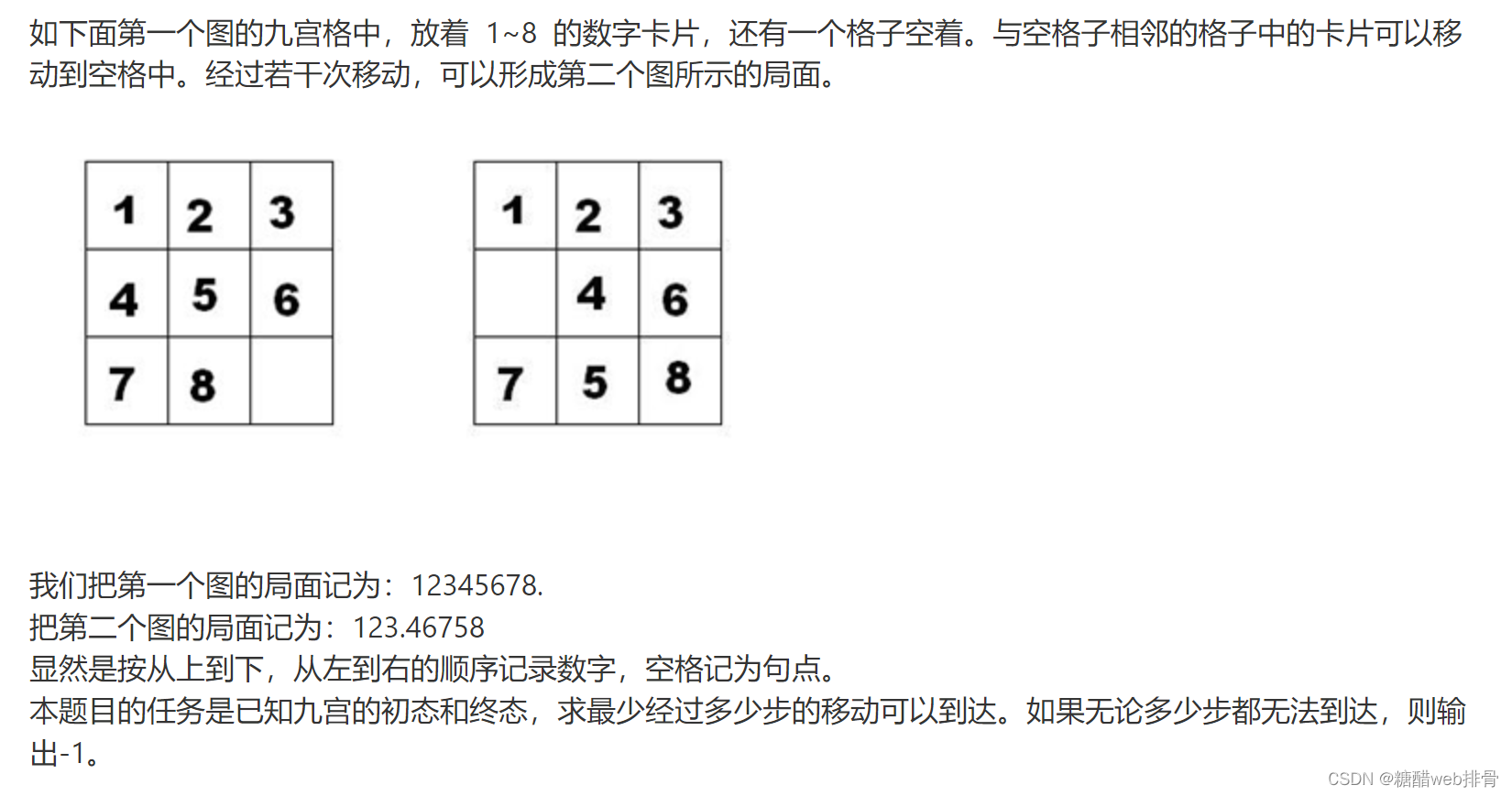题目概述
方法一 单向bfs
九宫重排问题就是典型的广度优先搜索问题,最初我的想法是利用单向的广度优先搜索实现,利用set来查重,通过广度优先搜索保证所需的步骤是最快的(关键点)。但是问题是单向的bfs速度上较慢,我在某些oj上运行不能通过,所以去查资料,发现还可以使用第二种方法。
方法二 双向bfs
单向虽然可以,但是速度比双向慢。因为随着递归的深度变深,每走一步要尝试更多种走法,双向bfs利用的就是两边同时走,在方向不同但是图案相同的点相遇。
借用别人的图来说明一下

?
代码如下
#include<iostream>
using namespace std;
#include<map>
#include<queue>
int dx[4] = { 0, 1, 0, -1 }, dy[4] = { -1, 0, 1, 0 };
string nextMat(string mat, int dir) {
int dotInd = mat.find('.');
int sucX = dotInd / 3 + dx[dir], sucY = dotInd % 3 + dy[dir];
if (sucX < 0 || sucY < 0 || sucX>2 || sucY>2) return "null";
swap(mat[dotInd], mat[(sucX * 3) + sucY]);
return mat;
}
int bfs(string first, string endd)
{
queue<string> Q;
Q.push(first);
Q.push(endd);
map<string, int> thestep;
map<string, int> thedirect;
thestep[first] = 0; thestep[endd] = 0;
thedirect[first] = 1; thedirect[endd] = 2;
while (!Q.empty())
{
string str = Q.front();
Q.pop();
for (int i = 0; i < 4; i++)
{
string tempstr = nextMat(str, i);
if (tempstr != "null" && thedirect[tempstr] != thedirect[str])
{
if (thedirect[tempstr] + thedirect[str] == 3)
{
return thestep[tempstr] + thestep[str] + 1;
}
Q.push(tempstr);
thedirect[tempstr] = thedirect[str];
thestep[tempstr] = thestep[str] + 1;
}
}
}
return -1;
}
int main()
{
string first, endd;
cin >> first;
cin >> endd;
cout << bfs(first, endd);
}